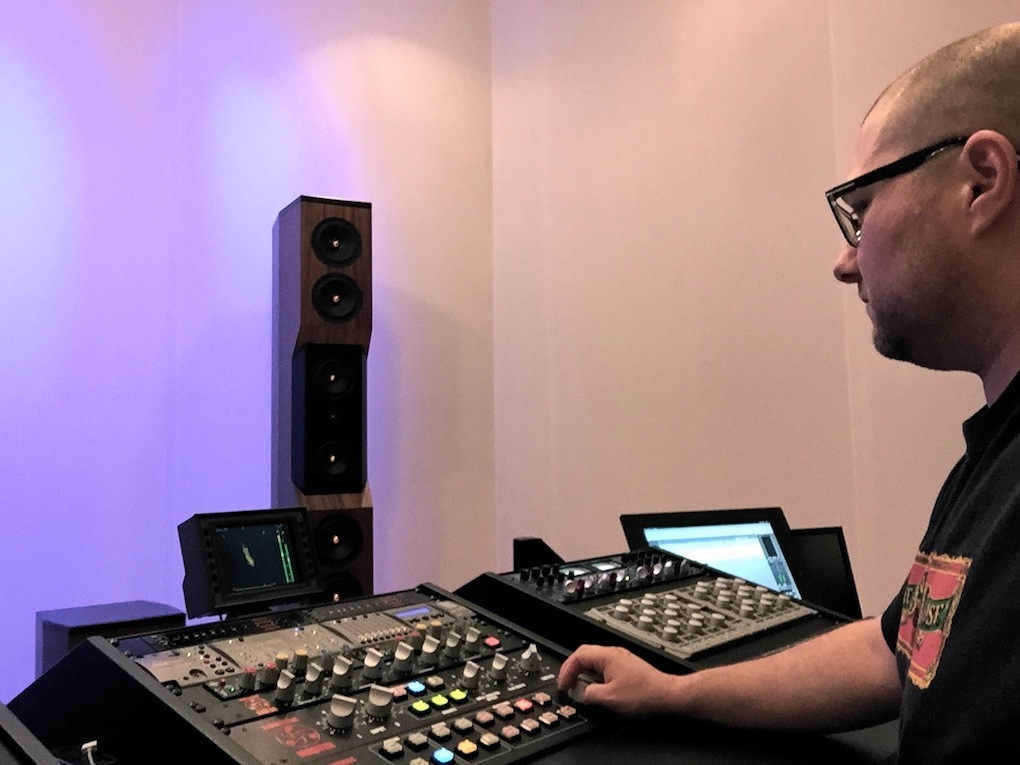- in Production by Bobby Owsinski
Mastering Engineer Colin Leonard On His Aria Online Analog Mastering

It takes a lot to convert hit-maker mixers like Phil Tan and Dave Pensado into big fans, especially if you’re not in one of the media country’s media centers, but Atlanta-based Colin Leonard and his proprietary mastering technology has managed to do just that. With credits that include Justin Bieber, Jay-Z, Echosmith, Leona Lewis, Al Di Meola, John Legend and many more, Colin is proving that there’s a new way to look at mastering that’s equally effective as the traditional techniques. Along with his custom mastering service at SING Mastering, Colin is also the creator of Aria automated online mastering, the latest trend in convenient and inexpensive mastering. In this excerpt from the 4th edition of my Mastering Engineer’s Handbook, Colin describes Aria in detail.
“Bobby O: How did Aria come about?
Colin Leonard: I guess some of it was being loaded up with a lot of work and sometimes being a little overwhelmed about how fast people needed things turned around. I’m sure that a lot of busy mastering engineers feel that same frustration sometimes. The deadlines might not be realistic or even real, but your client sets those deadlines and you have to follow them. A lot of times, if you don’t get those projects done on time, you just don’t get those projects anymore.
Another part of it was that from mastering so many projects I have a basic setup that I start with, and figured I could automate some of it. It’s a unique idea in that we’re doing it in the analog domain. This was before I even heard of any of the other online processes.
The tools that I use in the Aria system are all the tools that I use in my normal mastering setup. It comes in digital, we do some scans and snapshots of the audio in the digital domain, then it uses our custom software to play back from one computer. It then goes through a real high-end D/A convertor and through the whole analog chain, which has automation elements built in, and then it gets recorded again into the digital domain after a real high-end D/A convertor. From there we can control the exports into the file format that we want. The whole system is hosted in-house, so the servers are here, which makes it really fast. The file goes directly from you to our server here, so it’s immediate. As soon as it’s mastered it hits your account for download.
How long did it take you to develop the idea?
I had the idea in 2013. I financed the whole thing from my mastering work, so I’ve been juggling these two things this entire time. It probably could have gone a little faster if I hadn’t done that, but I wanted to maintain control of everything so we wouldn’t have to do any silly marketing or anything.
Philosophically, aren’t mastering engineers opposed to automated mastering?
Yeah, as I’ve seen online most of them are, but I think Aria is a different product than what I offer at SING Mastering. For one thing, budgets have really dropped. There are some clients that are willing to pay for high-end professional mastering, but there are also clients that maybe don’t have the money to spend on their project, or maybe they need it in like an hour, so I think it fills a void for some clients.
Isn’t there some pushback from mixers as well, mostly because they don’t believe the final product will be as good as they expect?
I haven’t had a lot of that from mixing engineers. Most of my beta testers were really good mixing engineers and they are still using it every single day. If they didn’t like it they wouldn’t use it.
Part of the idea is that it creates reference level material. Most engineers need to get a level that’s competitive with what’s commercially available to get approval from the client. I think it fills a void for mixing engineers in that they don’t have to focus on the loudness of the track. It’s almost like they’re handing in a mastered reference.
How loud is it when it comes out the other side?
It depends on the mix. There are 5 settings that go in order of compression, so it depends on what you’re going for. A and D and E are very safe settings and they’re not pushed hard; B and C have a lot more analog push to them, which can be great on certain types of mixes. Once you play with it a few times you get the hang of it. Also, once you pick a certain setting you’re not married to that setting. You can remaster it at a higher or lower level at no extra charge.
Explain the multiple levels for buying the product.
You can get it on a per song basis or a subscription basis. The subscriptions are on a monthly basis. For instance, you can buy a subscription for as many as 100 tracks a month if you have a big album to do with a bunch of different versions. That way you’ll be able to do it a lot cheaper than what the single rate is.”
Find out more about Aria automated online mastering here.
You can read more from The Mixing Engineer’s Handbook and my other books on the excerpt section of bobbyowsinski.com.

